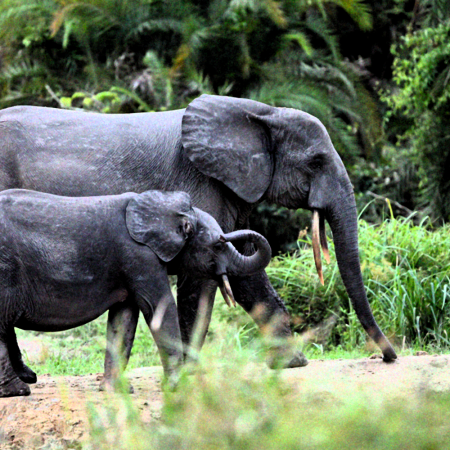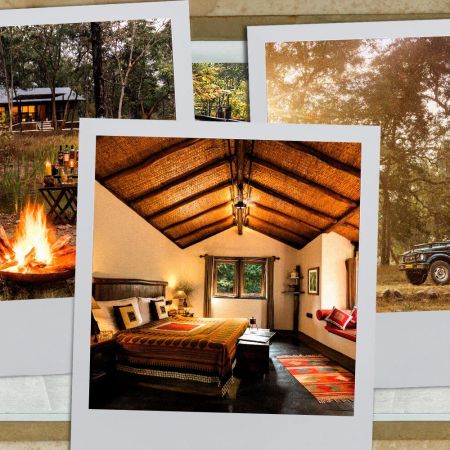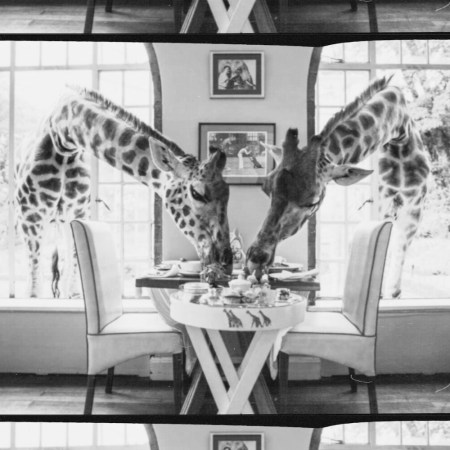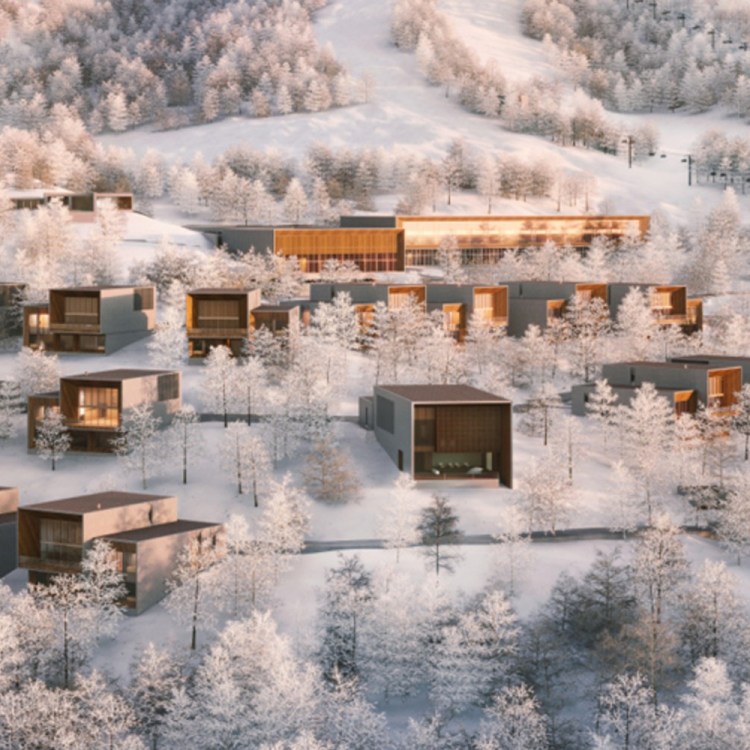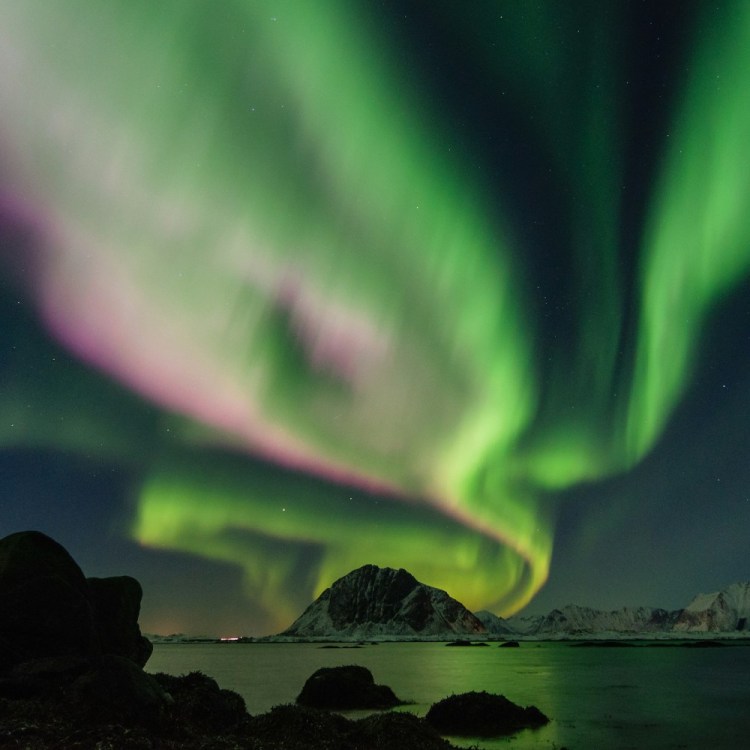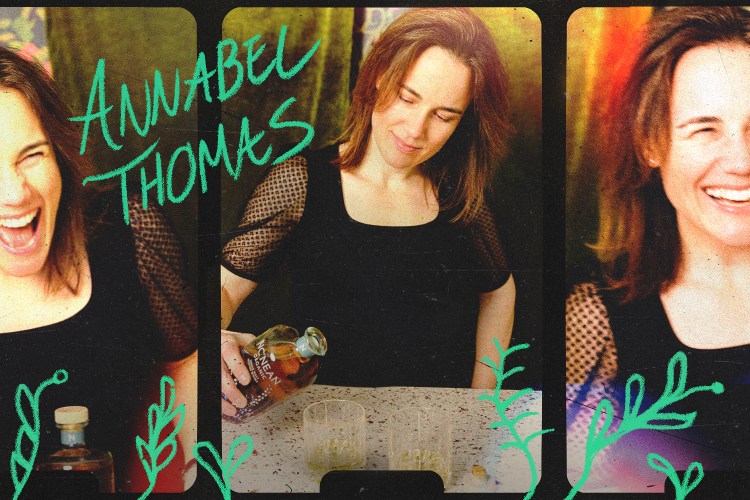The rumble of a Land Cruiser’s diesel engine as it trundles along miles of red dirt roads, rocks pinging off its metal underbelly. This is an adventure lover’s lullaby. It was early evening and we had been tracking big game for hours in a little-known safari destination next door to the Maasai Mara National Reserve, one of Africa’s most famous offerings. Plump warthogs ran across the rutted track. Herds of giraffes, each a dozen strong, grazed lazily on acacia leaves, expertly maneuvering around three-inch thorns with their comically long tongues. The radio crackled as drivers informed each other of a cheetah hunt.
Forty-five minutes by dusty road from the famed green plains of the Maasai Mara is Naboisho Conservancy, one of the most recently established preserves of its kind in Kenya. It was created in 2010 through a partnership between Saruni Basecamp, an organization working with local communities to protect this complex ecosystem, its renowned wildlife and the vibrant local culture, and the Maasai people who have called this area home for four centuries.
In 1998, Norwegian financier Svein Wilhelmsen was on vacation in Kenya when he had a fateful meeting with a Maasai elder, Ole Taek. Sitting around a fire under a star-filled sky, two men from very different worlds united over a passion for conservation and culture. From that meeting, Wilhelmsen launched the Basecamp Explorer Company which would eventually become Saruni Basecamp, an adventure travel brand with a mission to serve the land and its people.
“Naboisho” is a Maasai war cry meaning “coming together.” Fittingly, the mission of this endeavor is to encourage responsible tourism and conservation in coordination with locals. While the more popular national game reserves, like the Maasai Mara, are owned by the Kenyan government, conservancies are owned by the people. In the case of Naboisho Conservancy, over 600 Maasai landowners are its custodians, leasing their land to ecotourism outfitters like Saruni Basecamp, among other partners.
When you give people a stake in the game, a say in the decisions and an ability to profit from what is rightfully theirs, you give them reason to care. Kenyan conservancies are proving the value of this model through cold, hard numbers. In the Samburu region of northern Kenya, the Sera Rhino Sanctuary, within the Sera Conservancy, operating since 2015, and home to both white and black rhinos, has never had a single incident of poaching. Meanwhile, South Africa’s Kruger National Park, managed by a government agency, lost 88 rhinos to poaching in 2024. According to conservation professional Tadzio Bervoets, who spent time working in South Africa’s Waterberg municipality, the key difference is management.
“In South Africa, conservation has always been shaped by the legacy of apartheid, which has left deep scars on the sector,” Bervoets told me. “Many of the country’s national parks and private reserves were established through forced removals of Black communities, reinforcing the perception that wildlife and conservation areas belong to a privileged few.”

My personal experience in Kenya couldn’t have felt more different. In addition to fostering extraordinary wildlife habitats that attract visitors, receiving a profit from land leases and working with ecotourism companies as bonafide partners, villagers are permitted to graze cattle — a fundamental part of Maasai economy, currency and status — in specific areas of Naboisho Conservancy, allowing them to utilize their resources in a number of ways. The conservancy model encourages coexistence between wildlife and communities, significantly reducing human-wildlife conflict. The overarching goal is to protect as much land as possible rather than allowing private, and often foreign, investors to purchase and develop it on their own profit-obsessed terms.
Naboisho Conservancy is a crucial puzzle piece in the Serengeti-Maasai Mara ecosystem which stretches across two countries and encompasses multiple reserves and conservancies. The result is a protected wildlife corridor allowing some of Africa’s most famous residents the freedom to roam, dramatically increasing wildlife numbers. While Naboisho Conservancy is just 145 square kilometers, about the size of Utah’s Bryce Canyon National Park, it’s a significant ally to the 40,000-square-kilometer Sergengeti-Masai Mara ecosystem. Thanks to its efforts over the last 15 years, Naboisho is considered to have one of the highest lion densities in all of Africa.

“A Throwback to a Bygone Era”
My guide, Esymey, one of the few female safari guides in the area, looked at a distant hill and sped up, hot on the trail of a group of 20 lions. I looked at the same hill and saw only rocks and brush. Within minutes we sat amongst a large pride of females and cubs, close enough to hear their feline grumbles as they changed positions, swinging all four paws in the air like oversized house cats.
For nearly an hour, Esymey and I sat alone with the pride. Even when onlookers arrived, there were never more than three vehicles — a privileged position in an industry where dozens of trucks can gather at a lion kill, encircling the spectacle like hovering vultures.
The safari companies hosting tourists operate by rules that make Naboisho Conservancy feel like a secret find. Only nine safari camps are allowed in the conservancy, four of which are in the Saruni Basecamp family, limiting the number of beds and vehicles. The exclusivity feels like a throwback to a bygone era.
Under the Sea, Into the Rainforest and Among the Caretakers of Far North Queensland
On a planet that feels increasingly small, this corner of Australia remains as wild as ever. That’s thanks in part to massive conservation efforts that include everyone, even tourists.Admittedly, there are many excellent safari companies that operate in Kenya, but Saruni Basecamp is an outlier in its multifaceted support of local communities. From empowering women by training them as guides and supporting their craftsmanship work, to employing local people at the safari lodges, to promoting from within to positions of management, the camps are a model to aspire to. Of the five Saruni Basecamp properties I visited across Kenya in February, all were managed by locals, and three by women.
For those who’ve partaken in a safari, there’s another difference you’ll notice immediately: the dress. My Samburu and Maasai guides wore colorful traditional attire adorned with feathers, beadwork and bijouterie, jewelry with deep symbolic meaning, expressing the pride of their people. We often passed other trucks where tourists stopped to photograph one such Samburu guide, Jimmy, in his elaborate regalia, rather than the khaki and olive gear popularized by the British Army and ubiquitous on the safari circuit. As for Esymey, she wore intricately designed beaded belts and modernized Maasai shuka capes draped over her shoulders, always looking both regal and stylish. I sheepishly felt inadequate in my own dusty boots and olive slacks.
![A safari guide driving a vehicle through the Naboisho Conservancy [left]. And Kinga Philipps looking at a rhinoceros on a safari [right].](https://www.insidehook.com/wp-content/uploads/2025/05/kinga-philipps-naboisho-conservancy.jpg?w=1500&resize=1500%2C1000)
The Lion Lullaby
The crux of the conservancy model is that it’s dependent on tourism for its survival. At Saruni Basecamp, all camps are full board, meaning travelers get meals, airport transfers, shared game drives, and guided bush walks where allowed. Rates vary between camps and seasons, from $105 per person per night to over $1,000 for the sweeping villas. They operate 13 safari lodges and camps across Kenya, four of which are within Naboisho: Basecamp Wilderness, Basecamp Dorobo Mobile Camp, Saruni Eagle View and Saruni Leopard Hill.
The latter, my camp for two nights, came with a resident leopard. At night, a movement in the tall grass usually indicated a giraffe coming to drink at the pond by the light of the moon. I slept to the whoops of hyenas and the distant, deep, bellowing calls of two male lions known to frequent the area.
At day break we wandered dewy trails on a walking safari, coming across a lioness and countless herds of zebras and giraffes. Two young bull elephants played an obvious game of tag, chasing and shoving each other like children on a playground. Under the full moon we ate a bush dinner while our Maasai warriors, armed with spears, stood alert between us and the glow of hyena eyes surrounding us like stars in the night sky, waiting for their chance to collect leftovers.

The various camps are designed to be non-permanent and minimally intrusive to the environment, yet the tents are fully in the glamping realm, lacking nothing in terms of comfort even in this secluded wilderness. A remote-operated sky window opened my roof so I could view constellations from bed. My outdoor shower became the highlight of my evenings, a welcome place to wash off the day’s dust and reflect with gratitude. A sole walkie-talkie sat by my bed if ever I needed to leave my tent at night, which is only allowed after dark in the company of a Maasai warrior. Every morning I checked the surrounding area for prints and scat, often finding fresh giraffe droppings mere feet from where I slept in my canvas sanctuary.
Kenya has long fascinated me: images of the great wildebeest migration, nearly two million strong; vast green plains dotted with solitary acacia trees under which lions rest in the oppressive midday heat. The crown jewel of this region has always been the famed Maasai Mara National Reserve, which gained fame abroad partially thanks to Meryl Streep and Robert Redford in Out of Africa and any number of documentaries soundtracked by David Attenborough’s soothing voice. Indeed, the Mara is all that: as extraordinary to experience in person as it is in all the media versions presented to us. But as is the case in most places on this earth, the eye-opening experiences we look for when we travel are normally found beyond the well-trod tourist trails.
This article appeared in an InsideHook newsletter. Sign up for free to get more on travel, wellness, style, drinking, and culture.




